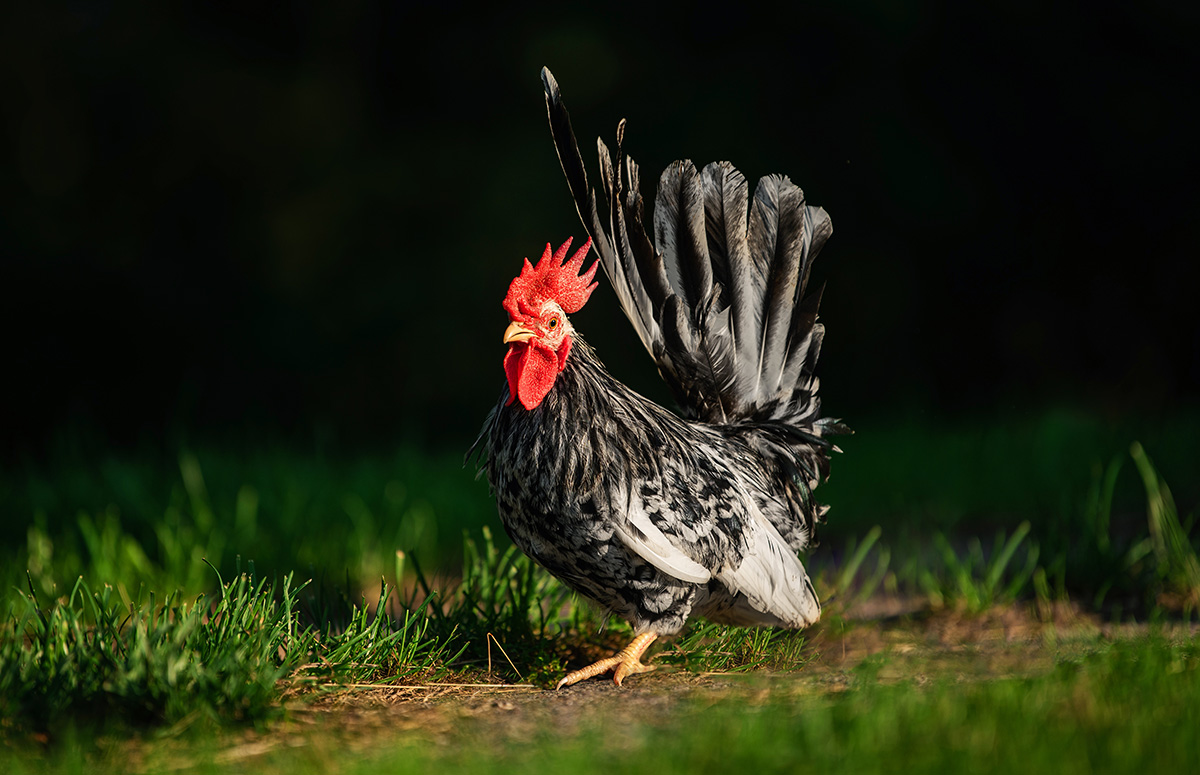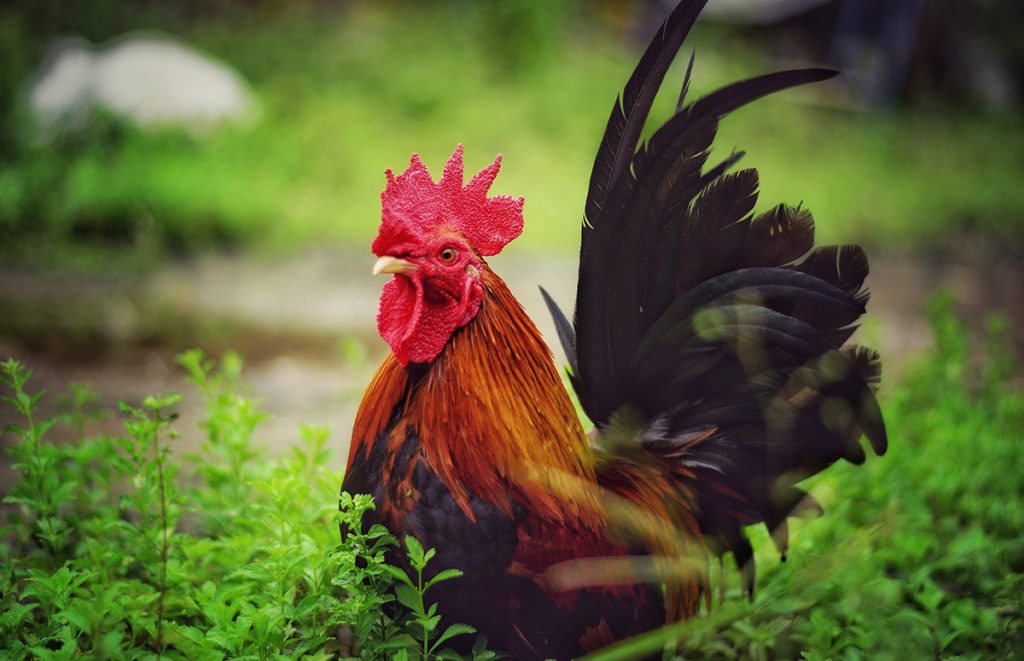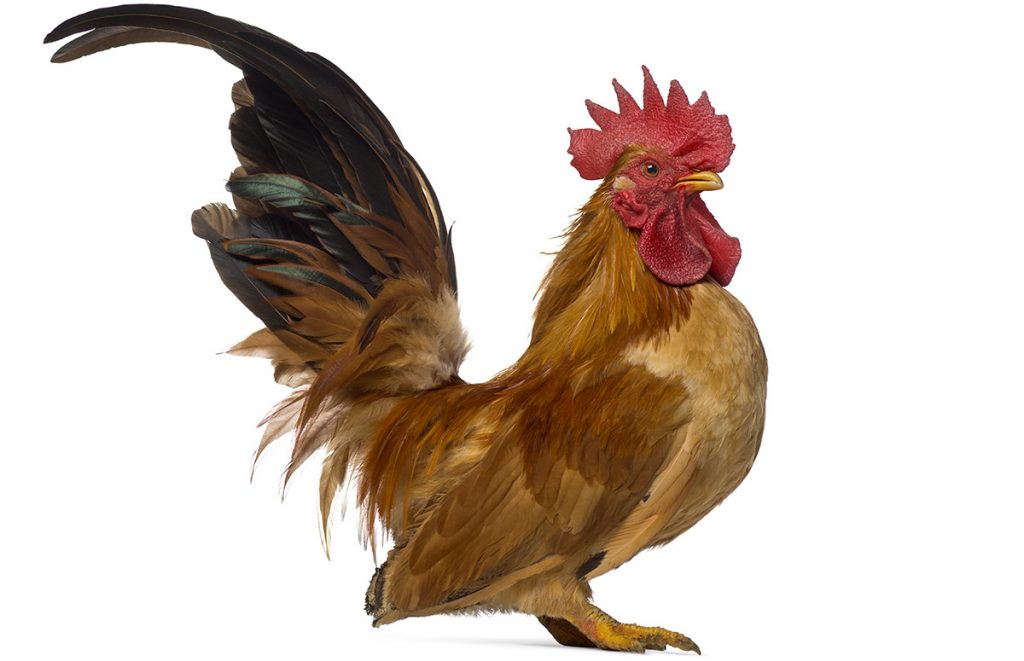Japanese Bantam (Chabo) Chicken: Breed Profile

If you’re looking to add some flair to your flock, the Japanese Bantam, or Chabo, is going to bring plenty of that. It has the shortest legs and a high-reaching tail, making it look like a petite powerhouse. In this breed, it’s not about the eggs, but about adding some class to the coop!
- Japanese bantam chickens lay up to 50 eggs yearly
- Friendly and docile chicken breed
- Very broody
- Do not stand cold well
Characteristics
The Japanese Bantam, or Chabo, is a visual feast for anyone who likes chickens. The breed is renowned for its unique appearance that is sure to turn heads. They are a true bantam breed, with males weighing around 1.3 lbs and females around 1.1 lbs.
One of the most distinctive features of the Japanese Bantam is its incredibly short legs. This characteristic results from the creeper gene, which gives the chicken a charming posture and walk. It almost looks as if it’s perpetually strutting down a runway.

The tail of a Japanese Bantam is another attention-grabbing trait. It stands upright, reaching higher than the head of the bird. This high-reaching tail contributes to the overall sophisticated appearance of the breed.
There are several color varieties possible in the Japanes Bantam. Common color options include birchen grey, black, blue, buff Columbian, cuckoo, lavender, partridge, red, silver-grey, and more.
Various types of Japanese Bantams are recognized within Japan, each with its own characteristics. For instance, the Okina Chabo has a bearded look, while the Higo-Chabo includes varieties like Dorama and Taikan, characterized by an unusually large comb. The Shinguro Chabo, is entirely black, with skin reminiscent of a Silkie.
Egg Production
Regarding egg production, the Japanese Bantam takes a more laid-back approach than some of its high-output counterparts.
This petite bird is not your go-to for churning out plenty of eggs. Instead, it brings a touch of charm to your backyard.
On average, a Japanese Bantam lays about one egg per week. All eggs are cream to tinted in color. While this might not set any records for prolific egg-laying, what it lacks in quantity compensates with elegance.
The eggs laid by the Japanese Bantam are notably small. For backyard chicken owners primarily focused on egg production, the Japanese Bantam might not be the top choice.
However, if you want to diversify your flock with a breed that brings a distinctive touch to the coop and doesn’t mind taking it easy on the egg-laying front, the Japanese Bantam is an excellent option.
One important aspect of the Japanese Bantam’s personality is its tendency to be a bit broody. This means they exhibit a strong inclination to sit on and hatch eggs.
Personality
The Japanese Bantam also brings a delightful personality to the coop. They are known for their docile and friendly nature.
Due to their pleasant behavior, these birds often become favorite companions among backyard chicken keepers. They tend to be sociable and even enjoy human interaction, making them a great backyard pet for chicken keepers with small children.

Japanese Bantams generally tolerate confinement well, making them suitable for backyard setups with limited space.
Within a flock, Japanese Bantams often maintain a calm and non-aggressive demeanor. They typically get along well with other breeds, but it’s best to keep them together with other small and friendly breeds, like the Belgian d’Uccle, Rosecomb Bantam, Silkies, or the Antwerp Bantam.
Hardiness
When winter blankets the coop with frost, the Japanese Bantam may not be as enthusiastic as some cold-hardy breeds.
Their short legs and relatively small size might make them a bit less equipped for harsh winter conditions. However, with proper coop insulation and additional measures to shield them from the cold, these charming birds can still thrive in colder climates.
Despite its origin in Japan, a country known for its diverse climate, these birds handle heat remarkably well. Their feathered clothing doesn’t seem to weigh them down in the heat, and their small size contributes to their ability to stay cool.
However, it’s essential to be mindful of the specific needs of all chicken breeds during temperature extremes. During hot spells, providing shade and ensuring access to fresh water is crucial. In colder weather, offering cozy, insulated spaces in the coop can help them weather the chill more comfortably.
History
The history of the Japanese Bantam, or Chabo, is somewhat elusive. Mitochondrial DNA evidence suggests that, like other Japanese ornamental breeds, the Chabo derived from selective breeding of fighting chickens – the ancestors of the modern Shamo breeds.
This historical connection reveals the breed’s roots in Japan’s long-standing tradition of chicken husbandry.
The earliest recognizable portrayals of the Chabo can be traced back to the 17th century. Art from this period showcases a short-legged chicken with a tall, upright tail – believed to be the Chabo. This visual evidence provides a historical anchor for the breed’s existence in Japan.
The first documented exports of the Chabo to Europe and the United States began around the 1860’s. Although not initially included in the first British poultry standard in 1865, it was later described in W. Tegetmeier’s “The Poultry Book” in 1867.
The Japanese Bantam’s history is marked by ongoing appreciation. As a true bantam breed – with no standard-size counterpart – its distinctive features, including short legs and a high-reaching tail, continue to captivate poultry enthusiasts.
Creeper Gene of the Japanese Bantam
We’ve mentioned that the short legs of the Japanese Bantam are caused by something called the ‘creeper gene’. For those interested, let’s explain this in simple terms, how it works.
Think of the creeper gene as the secret sauce that gives some chickens their short legs. It is considered a form of dwarfism in chickens, but in the case of the Japanese Bantam, this trait is intentionally bred to enhance the breed’s ornamental qualities.
Here’s the deal: Chickens come with two sets of leg instructions – one for short legs and one for long legs. The creeper gene is the rule-maker here.
So, when two chickens carrying the creeper gene mate, 25% of their chicks get a double dose of the creeper gene. Sadly, these embryos don’t make it past the egg stage.
Now, the other 75% get a mix. About 50% of the chicks get one creeper gene and a regular gene, and the remaining 25% get two regular genes.
The ones with one regular gene and one creeper gene are the ones with short legs, just like their folks, and the trait carried by Japanese Bantams.
Summary
The Japanese Bantam, or Chabo, is a captivating ornamental chicken with short legs and a high-reaching tail, thanks to the creeper gene.
Originating from Japan, this breed has been globally admired since the 17th century. While not prolific egg layers, their petite, tinted eggs and friendly personalities make them charming additions to backyard flock.






















